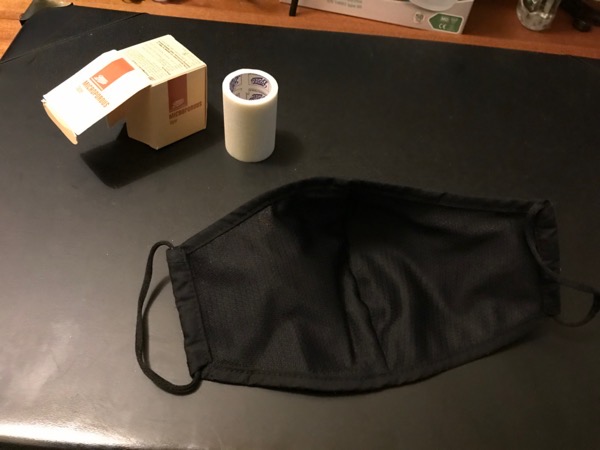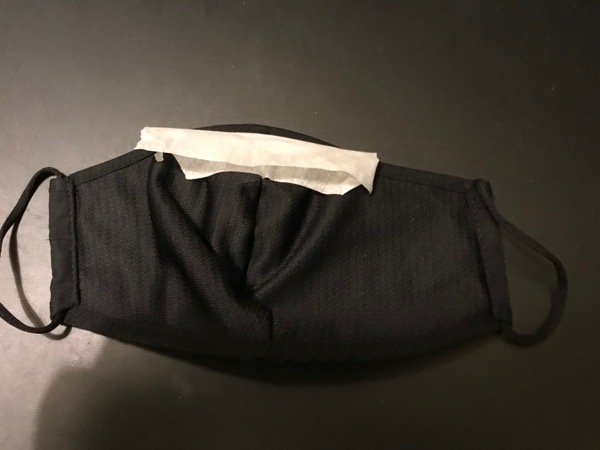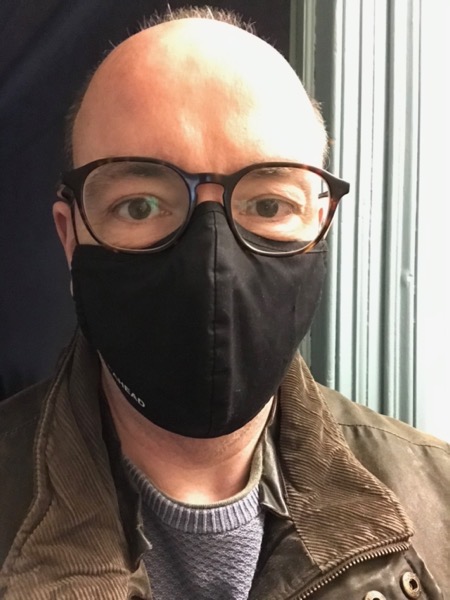Category: Life Writing
You are viewing all posts from this category, beginning with the most recent.
How to Write an Autobiographical Novel by Alexander Chee (Books 2021, 4)
Despite the title, this is not a writing ‘how-to’ book, except maybe by example. Nor is it a novel itself; it is a collection of essays. The subjects they cover do include writing and writing courses, most notably the Iowa Writers' Workshop. That was one of the first, if not the first, postgraduate-level courses in creative writing, and Chee studied on it.
But the book covers a lot else, too. As Chee is a mixed-race gay man, you won’t be surprised to hear that those details feature in a number of the essays. As does living in New York and trying to make it as a writer. And growing roses, and the origin of Catholic rosary beads.
I was drawn to this because one of the essays was assigned reading on the MA early this term, and he was also cited at various other points on at least two modules.
His debut novel is called Edinburgh, which immediately interests me. Though you learn from a couple of the essays that he hoped, when younger, to go to Edinburgh to study parapsychology, but didn’t; and that the Edinburgh connection in the novel didn’t survive the writing and editing process, but he kept the title anyway.
I don’t know what his fiction is like yet, but he’s a fine essayist.
Astral Zen
Phase one complete, for me. I’m not long back from the vaccination centre (a vacant unit at the Westfield shopping centre, slightly weirdly) where I got my first dose of the AstraZeneca Covid-19 vaccine. I can feel my immune system surging, boosted with superpowers, and a strange, unearthly calm descend upon me.
I exaggerate. But it feels pretty damn good to have taken this step. I don’t get the next one until June, and it’s not like we’ll be out of the woods even then; not even personally, and certainly not the country or the world. Especially given the panic over a statistically meaningless set of blood clots, and the news today that the UK’s supply is going to be temporarily constrained.
But considering that it’s only just over year since we learned about this virus and the terrible disease it brings, it’s worth taking a moment to celebrate the scientists and doctors who were able to develop the vaccines so quickly. Not to mention all the NHS staff who are getting it to people.
A Year Passes Like Nothing
It’s exactly a year since I last went out to an event.1
I referred to ‘being out on a cold, virus-infested night’ to see Glen Matlock in Leytonstone, and it seems really weird now that I did it.
What were we thinking? Gathering together in a small hall, where people were singing and shouting. And not a mask to be seen! Masks? who had masks? How would we have drunk our beer while wearing a mask? You probably wouldn’t have been let in if you had turned up wearing a mask.
Although I had good social distancing at the start, when I was almost the only one there.
Memory, eh?
-
I actually thought it was on the last day of February 2020, which was the 29th, not the 28th, making it hard to hit the exact anniversary, but my blog and calendar both tell me I was wrong. ↩︎
Yesterday I tried removing my taped-on mask slowly, and it was actually much better. So I rescind my advice from the day before about removing it quickly.
Stop Your Glasses Steaming Up by Sticking the Top of Your Mask to Your Face Using Micropore Tape
The problem
If, like all sensible people, you wear a mask over your mouth and nose when you go out these days; and if, like me and millions of others, you wear glasses; then you will have experienced your breath causing your glasses to steam up.
The cause is a fundamental flaw in mask design: the mask fabric makes a straight line from our cheeks to the bridge of our noses, leaving a gap between face and mask seam. Most of our out-breaths are directed that way, just by taking the path of least resistance.
Some masks have a wire insert that lets you mould the top section around your nose. I find that improves things, but is still imperfect. There are always gaps.
The Bigger Problem
This means that the masks are not as effective as they should be for their primary purpose. All that warm, damp air that’s condensing on our glasses is also the air that might be carrying virus particles.
So while this solution helps with the steamed-up glasses problem, it also helps to make masks more effective, by ensuring that more of our potentially-poisonous breath goes through the fabric.
The Solution
It’s quite simple: apply a strip of micropore tape to the section of the mask that goes over the bridge of your nose, and seal it down well.

Micropore tape is normally used for fixing dressings on wounds, so it’s designed to stick to skin and come off with minimal fuss (though see below).
The roll we had when I thought of this is quite wide, so I’ve been folding a piece over and attaching it to the inside of the mask (at @FranChats’s suggestion).

As you can see, it’s not attached very tidily, but we’re not in this for the aesthetics.

And it’s not actually visible when the mask is on.
The New Problems: Removal, and Sensitivity
Taking the taped mask off is the worst part, in my experience. I’ve been doing it quickly: take off my glasses (otherwise they might go flying across the room); unhook the ear loops and take a firm grip of them; close my eyes; then tug sharply forward.1
It can make your eyes water, but honestly, for clear vision outside on these cold days, it’s worth it.
Removing it slowly might be better for some people. And the whole thing will not be for some. If you have very sensitive skin, or get a reaction to the adhesive, then this won’t be for you. But if you can take it, I highly recommend it.
Lastly, my pictures show a reusable mask, but it works for disposables too.
-
Though see my later post. I think I’ll be doing it slowly from now on. ↩︎
I played Dungeons and Dragons for the first time last night, with the family. My grown-up son plays, and he was our DM. It was more fun than I expected, but it takes a lot of work to set up. Mostly by my son, of course.
People Still Aren't Getting It
I got back on the bike today. First time since I came off back in April. Both because I felt the need to add some variety to my exercise regime, and because so many people are riding these days. And also because I missed it.
It was good. Nice to be back on the bike. A bit annoying the way the mask makes your glasses steam up, but nothing that a bit of slipstream couldn’t clear.
But it was very disappointing regarding people’s behaviour. I cycled around central Hackney for half an hour or so from about 9-9:30. It was pretty busy.
I counted 11 people wearing masks (and two chin-wearers, so they don’t count). I must have passed about 500 people? 700? That’s just a guess, but it was a lot.
Eleven masks.
My mask was protecting all of them: why weren’t they protecting me, and each other?
I mainly blame the government, of course. Incoherent messaging and absence of care. But… some of us have learned what’s best, even given the government.
You Are Your Thoughts (I Think)
Quiet Thoughts
Colin Walker links to a post by Julian Summerhayes1 about silence:
You see, I’m missing the silence of early lockdown.
No, I’m really missing it.
I can’t say everything’s back to normal but as soon as I step outside, BOOM, there it is! That infernal, torrid background noise, cars everywhere (the air smells dirty) and it’s like nothing ever happened.
– Julian Summerhayes, A quiet space
I can relate. I haven’t noticed the increased noise yet, but I have been enjoying much about lockdown, and the general quietness of things, especially when I sit out in the garden, is part of that. As is the cleaner air here in London.
Unthinkable Thoughts
But Julian goes on to say something that just seems so bizarre, so alien to me, that I can scarcely comprehend it:
But when you realise that you’re not your thoughts, notwithstanding the apparent hold they have over us, and see that they flow naturally much like my beloved River Dart and there’s nothing we can do to orientate them one way or the other, life becomes a lot easier.
– Julian Summerhayes, A quiet space
Emphasis very much mine. We are not our thoughts? I can’t help but think that there’s a missing pair of words in that sentence: ‘nothing if’:
… you’re nothing if not your thoughts…
Now that makes a lot more sense to me. If we are not our thoughts, then what are we? If our thoughts are not us, then who is doing the thinking?
People sometimes use phrasing like, ‘My brain told me to…’, which raises the same question: you are your brain, surely? If not, then what? We are our whole bodies, certainly, and perception and experience encompass all of our physiology, not just our brains. But the brain is the seat of consciousness, and we are conscious beings.
Perhaps – just possibly – people are making a distinction between brain and mind. Maybe that would make sense for the latter formulation, but I’m not convinced that’s it. And certainly it doesn’t explain Julian’s concept of thoughts. Because whether thoughts happen in the physical organ we call brain, or the somewhat more metaphysical and amorphous mind: thoughts are what we are.
In Other Heads
Or so it seems to me. But I shouldn’t dismiss alternative perceptions. Over the last few months I’ve heard several conversations on podcasts, and read a couple of articles, about the different ways people’s brains/minds/psyches/consciousnesses work.
There is aphantasia, which names the fact that some people do not form images in their minds. They have no ‘mind’s eye,’ in effect. Just yesterday I read an article about it and severely deficient autobiographical memory, or SDAM, which seems to be related.
There has also been talk about whether or not we think in words. That can get confusing when people with different experiences discuss ‘the voice in your head.’ One will ask something like, ‘Whose voice is it?’ The answer – from my perspective – is that the voice in my head is my thoughts. That’s how I think. Hmm, except when I think in pictures, as I’m not aphantasic (aphantastic?)
It’s hard to talk about these ideas in ways that someone whose experience is dramatically different will understand. And I find it surprising that we are so different. I wonder if we are just hitting the limitations of language (of English, at least). Maybe people’s experiences are not that different, but it’s just so hard to describe what goes on inside your own head in a way that is meaningful inside someone else’s head.
Or not. After all, some people do hear voices in their heads which appear not to be their own. We generally categorise those people as having a mental illness, and sometimes medication changes their mental experience. And of course psychoactive drugs cause us to have experiences in our own heads that are different from our normal state, so it’s clear that thoughts and perceptions are at least partly chemical.
This is all both fascinating and confusing, and I have no conclusions about it.
-
And fascinating to learn that someone is still using LiveJournal. Good to know. ↩︎
Strange seeing this tweet from the London Cycling Campaign:
When it's safe to cycle, people cycle. #LockdownCycleFreedom https://t.co/pTrXoBkNjk
— London_cycling (@London_Cycling) May 27, 2020
Cycling is up all over, apparently. Yet I stopped cycling for fear of putting extra strain on the NHS.